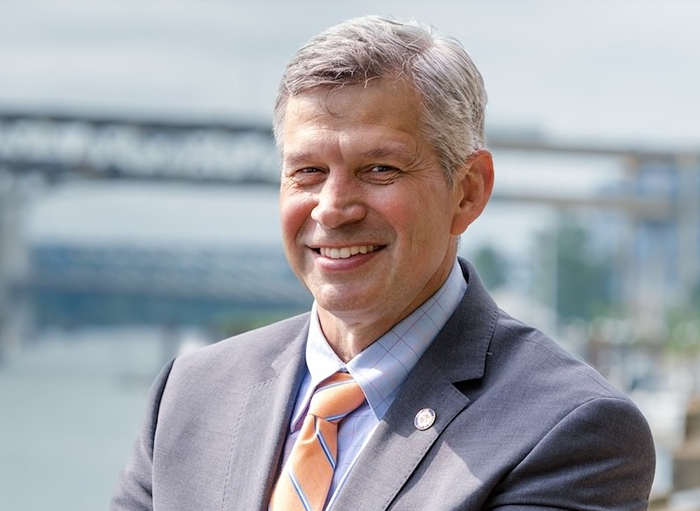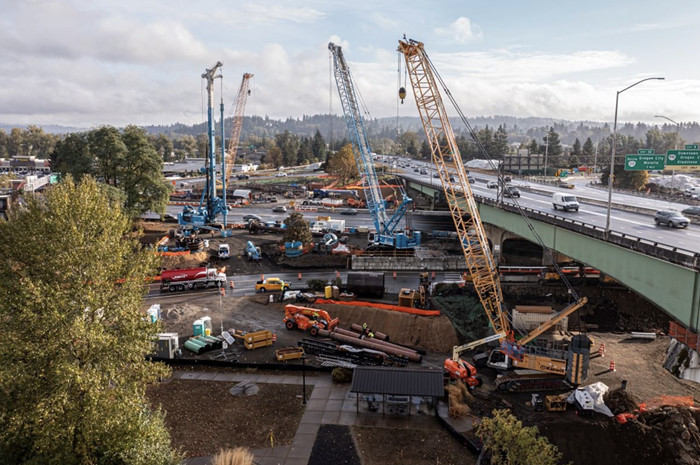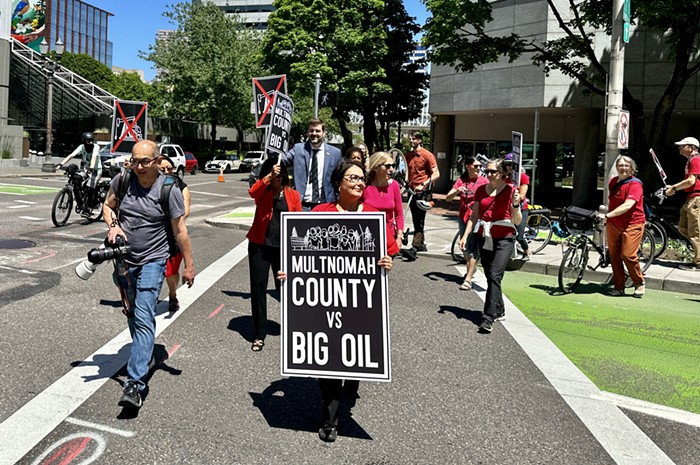
Parking is about to get more expensive in Portland as the Portland Bureau of Transportation (PBOT) seeks to close its funding gap and disincentivize solo car trips. Transportation leaders and parking reform advocates say the cost is more reflective of the true cost of driving a car that has long been subsidized with city funds.
“We’re working hard to develop pricing options and complementary strategies that support the climate, equity, and mobility outcomes that we all want,” said PBOT director Chris Warner.
PBOT has been facing a worsening budget deficit since 2010 due to a decrease in revenue streams and rising operations and maintenance costs. PBOT has two types of revenue: restricted funds and discretionary funds. Restricted funds come from grants, bonds, and specific bureau programs and are—as the name suggests—restricted to specific bureau expenses. For example, money PBOT collects from licensing and permit fees must be used to cover the administrative costs of reviewing and giving out those various licenses and permits. PBOT earns its discretionary revenue from fuel taxes and parking fees, like metered curbside spots and annual permits, and usually uses that money to fund bureau priorities, like planning for transportation safety projects.
However, as cars become more fuel efficient, the bureau’s fuel tax revenue has dipped. At the same time, PBOT hasn’t increased its metered parking costs since 2016, despite inflation making the program more expensive to operate. In its current form, parking revenue only covers 60 percent of what it costs PBOT to run the parking program.
If the bureau continues with its current revenue model, PBOT estimates that it will face a $30 million deficit in five years and a $130 million deficit in 10 years.
In addition to revenue woes, PBOT’s existing funding model relies heavily on fossil fuels and car trips that conflict with the bureau’s climate goals of reducing greenhouse gasses, which is in line with Oregon’s goal of cutting carbon emissions from fossil fuels by 90 percent by 2050. Seeing the bureau’s dependence on fossil fuels, City Commissioner Jo Ann Hardesty directed PBOT to develop a climate-conscious funding proposal when she took over the bureau in 2021.
“While we’re talking about the challenges and growing needs today, this strategy isn’t about just stopping the bleeding or catching up,” said Warner during a Portland City Council presentation on the bureau’s finances last week. “It’s about setting us up for the future and enabling us to be innovative, bold, and nimble in the years to come.”
To address the budget deficit and values contradictions, PBOT is first turning to parking.
Starting this summer, metered parking transactions will come with an additional $0.20 fee called the “Climate and Equitable Mobility Fee.” The fee is intended to send a message to drivers about the poor environmental impacts of driving—while also raising $2 million annually for PBOT. Those funds will go towards PBOT programs that subsidize transportation costs for low income Portlanders and bike and pedestrian safety infrastructure.
Additionally, PBOT will implement a “demand-based” parking price model in 2023. The model will price curbside parking according to the demand for parking in that area, as well as adjust for inflation. Metered parking spots across the city will likely increase by $0.40 per hour due to inflation alone, while high-commerce areas like downtown may see additional increases due to demand. However, metered parking prices will not increase more than $0.60 per year, according to PBOT. The inflation adjustment will raise an estimated $24 million over the next five years.
For people whose primary form of transportation is driving, these fee hikes may seem sudden and pricey. For parking reform advocates, the price increases are a baby step in the right direction.
Tony Jordan, director of the Parking Reform Network, sees parking pricing as a key tool to combat car dependency. To Jordan, an adequate parking price is one that equalizes supply and demand. Ideally, according to Jordan, there should always be one parking spot available on a block or a given parking area. That way, there is always a spot available for the driver who needs it, but not so many spots open that the wide availability encourages people to drive because it’s so easy to find parking in the area.
In populous shopping areas like NW 23rd Avenue, achieving that equilibrium might mean $3, $4, or $5 per hour—whatever it takes to leave space available for people who have to park in the area while encouraging others who have the option to walk, bike, or ride public transit to do so. According to Jordan, if parking spots were priced at their market-rate value, it would illuminate the true cost of driving and foster a larger shift towards public transportation, triggering greater investments in public transportation due to the increased demand.
“We use market pricing for a lot of things,” Jordan said. “It’s weird that parking is where people draw the line.”
But not everyone can realistically reduce their reliance on car transportation, especially people who don’t live near public transit or within walking or biking distance of their travel destinations. According to Warner, PBOT is exploring ways to limit the cost burden parking hikes have on low income households. One option, proposed by a city committee on how to equitably price transportation costs, is to create a program that provides monetary subsidies to low income Portlanders to directly offset increased parking costs.
Yet, transportation and environmental advocates note that equity within Portland’s transportation system is more complex than the burden of a parking fee.
During a city council meeting on PBOT funding last week, Oregon Environmental Council’s transportation director Sara Wright noted that a transportation system that invests in areas for cars, like highways and cheap parking spaces, is only prioritizing people who have the ability to own and drive a car. That leaves out Portlanders who are unable to obtain a license due to physical ability or age and people who can’t afford the average $10,000 a year it costs to purchase, maintain, insure, and fuel a car.
“This prioritization means that the benefits of the system—access to jobs, education services, and community—are not available to people who don’t meet that description,” Wright said. “This is particularly egregious given that the burdens of the system—air toxics, noise pollution, traffic violence, the loss of so much public space to car movement and storage, and the effects of climate change—are experienced more intensely by the same people who are less able to take advantage of the benefits. This rate raise will allow Portland to invest a little more in the people who are most heavily burdened and the least benefited by the status quo.”
PBOT will continue to develop longer-term ideas to change its revenue model, which may include switching from a fuel tax to a road-use tax that charges for the wear and tear of Portland streets. This model would capture fees from electric vehicles, as well as utility providers who use the space beneath Portland streets.



















